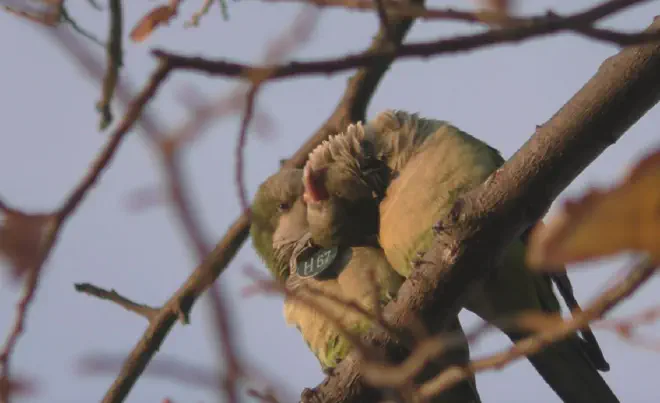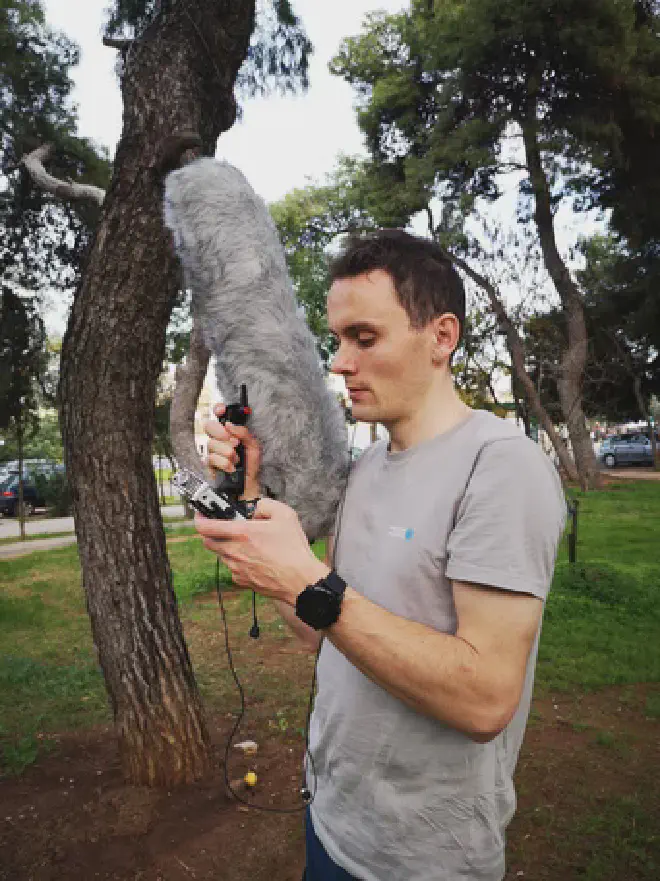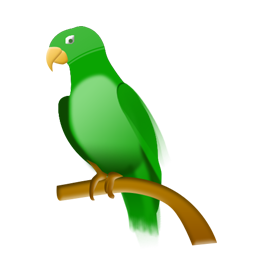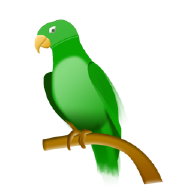

In the urban parks of Barcelona, Spain, the calls of a tropical parrot fill the air. The bright green monk parakeet, native to South America, has found a new home in European cities. Monk parakeets thrive in huge colonies where they communicate with each other using many distinct sounds—offering scientists a unique window into understanding the interplay of individual social relationships with vocal variety.
The MPI-AB scientists spent several months over the course of two years closely observing 337 monk parakeets, documenting their social lives as well as recording all their screeches, squawks, and whistles, which totaled 5,599 vocalizations. The team examined these calls in terms of repertoire diversity (how many different sounds a bird can make) and contact-call diversity (how much this specific type of call differs). They also mapped out the birds’ social networks, analyzing everything from how often they interacted with others to the strength of their relationships.

“This research is a really important first step,” says Simeon Smeele, the first author of the study. “It really looks like there are some call types that are used uniquely in social situations. And it’s really interesting to see that females appear to produce more of these, suggesting they are the more social sex.”
Social network analysis showed that parakeets with more central positions in the social structure—those that were potentially more influential in the group—tended to have more diverse vocal repertoires. In other words, the most social individuals seemed to have a better vocabulary than less social individuals.
“What I find really exciting is that we were able to link what individuals say to very specific levels of sociality,” says Smeele, who conducted the study as a doctoral student at MPI-AB. “For example, close friends that allowed each other to approach within pecking distance sounded less like each other, as if they were trying to sound unique in their little gang.”
Smeele said that “the next big step is to better understand what each of the sounds mean, a real mammoth task, since most of the social squawking happens in large groups with many individuals talking at the same time!”
- The paper The effect of social structure on vocal flexibility in monk parakeets was published in Royal Society Open Science. Authors: Simeon Q. Smeele, Juan Carlos Senar, Mary Brooke McElreath & Lucy M. Aplin

